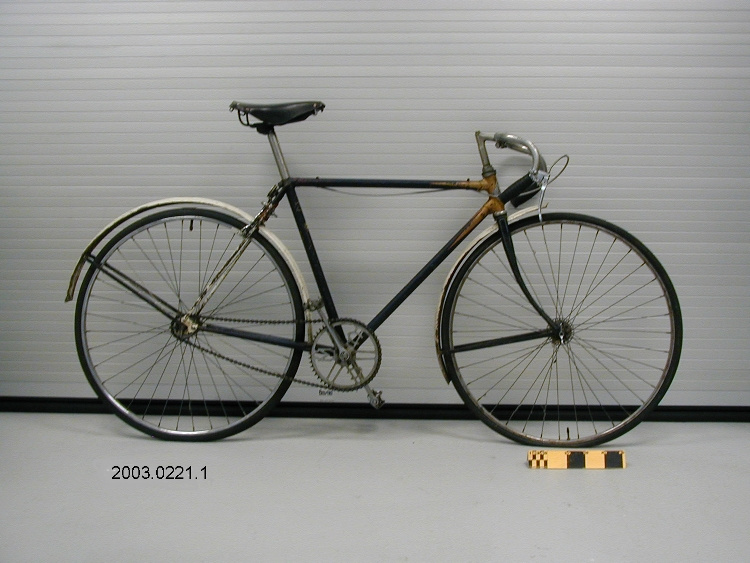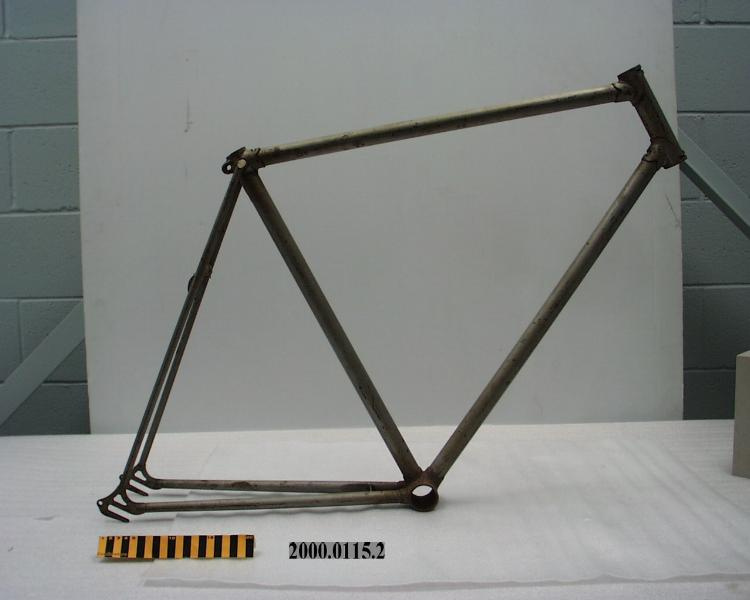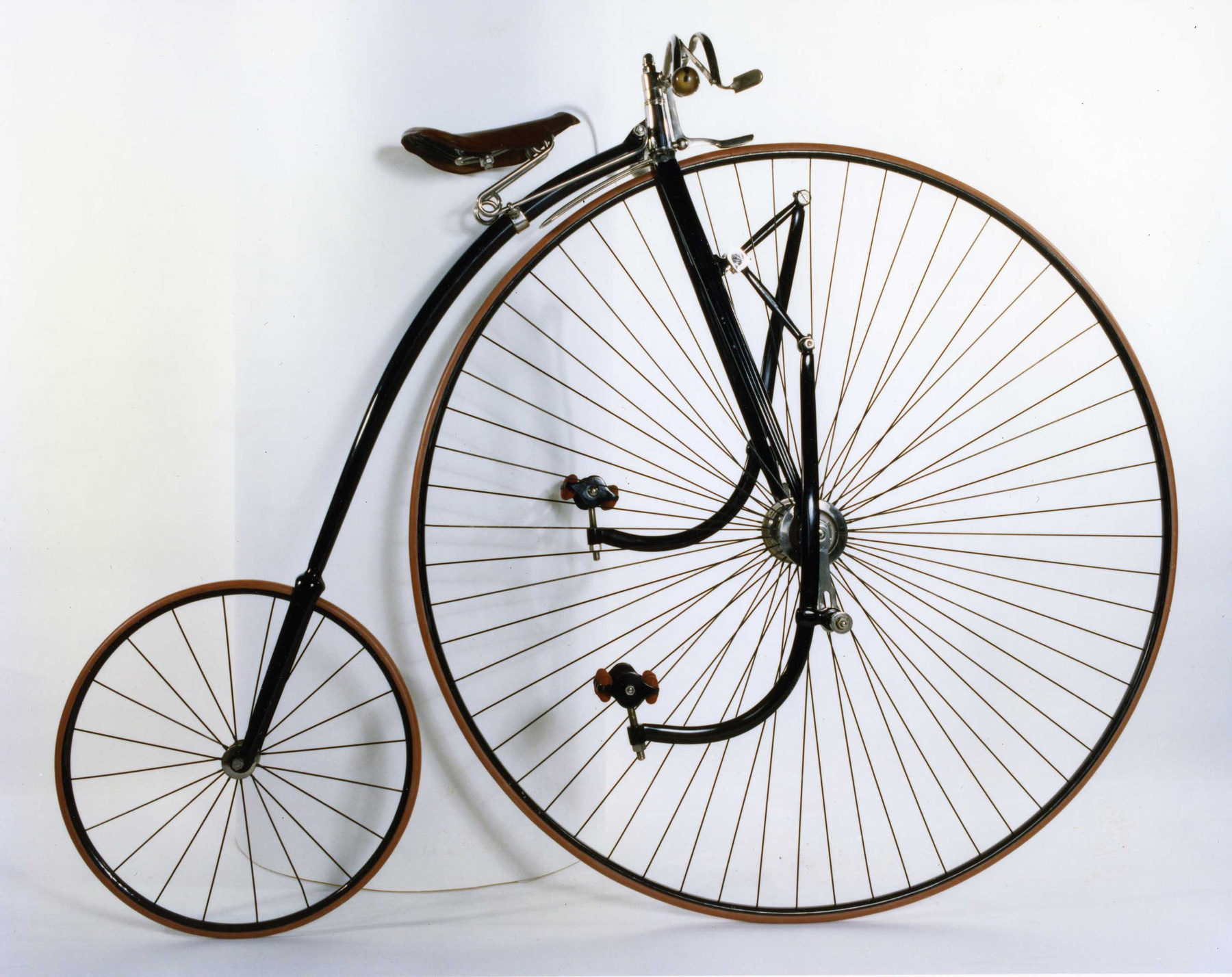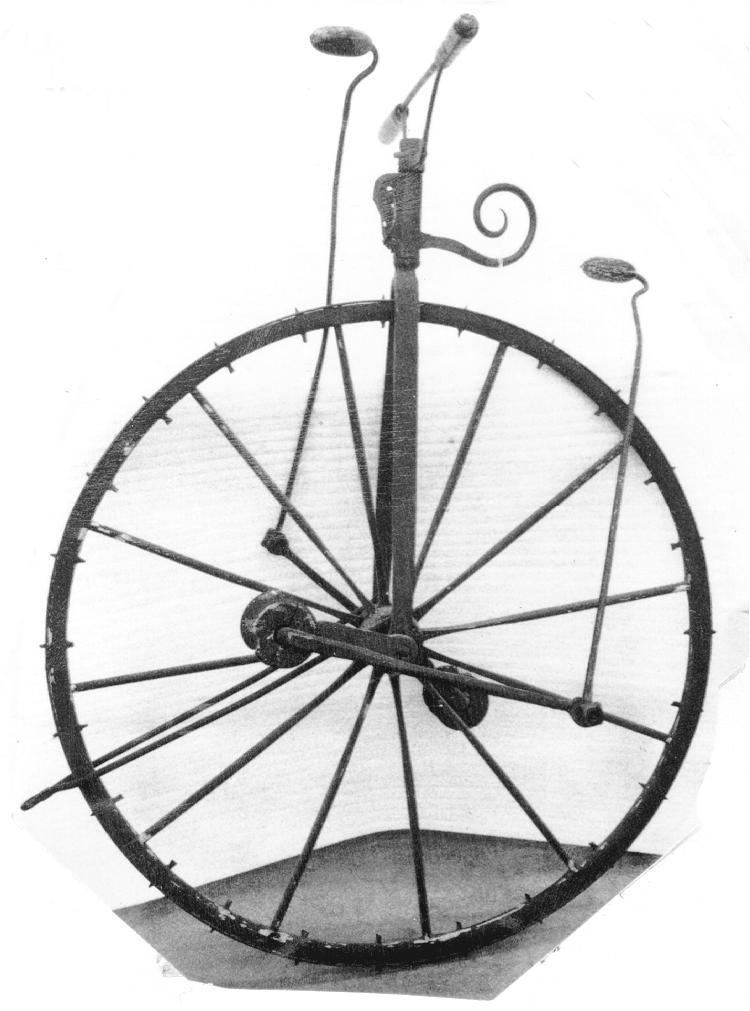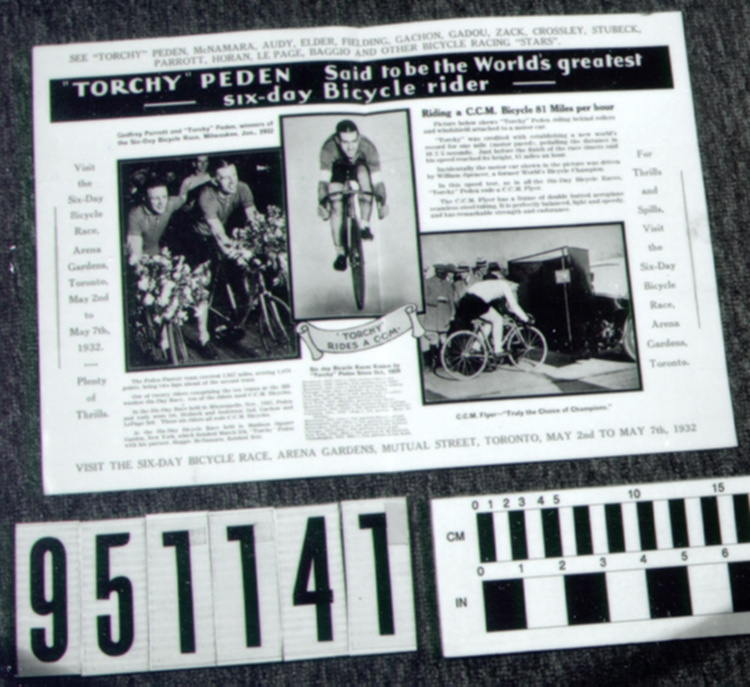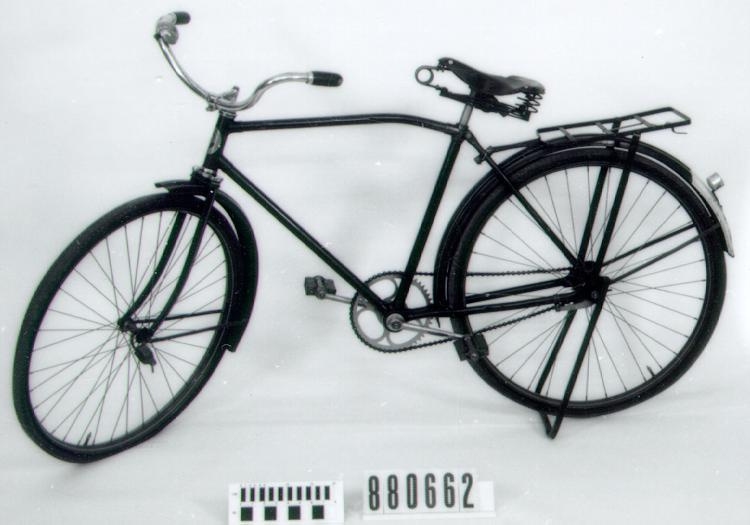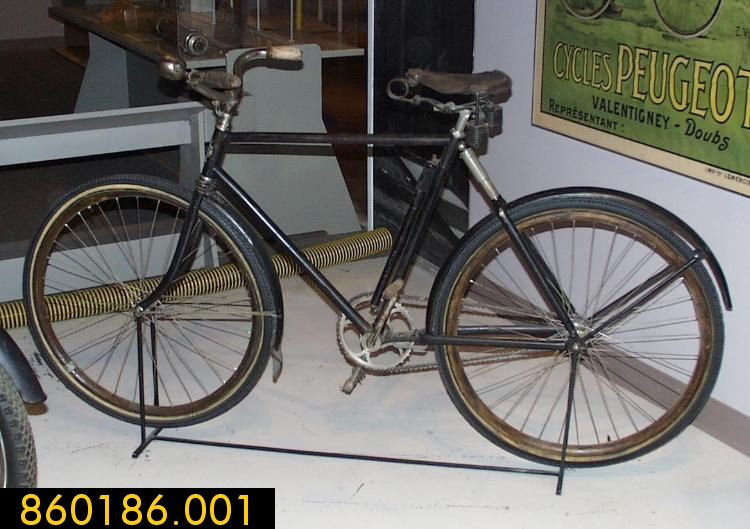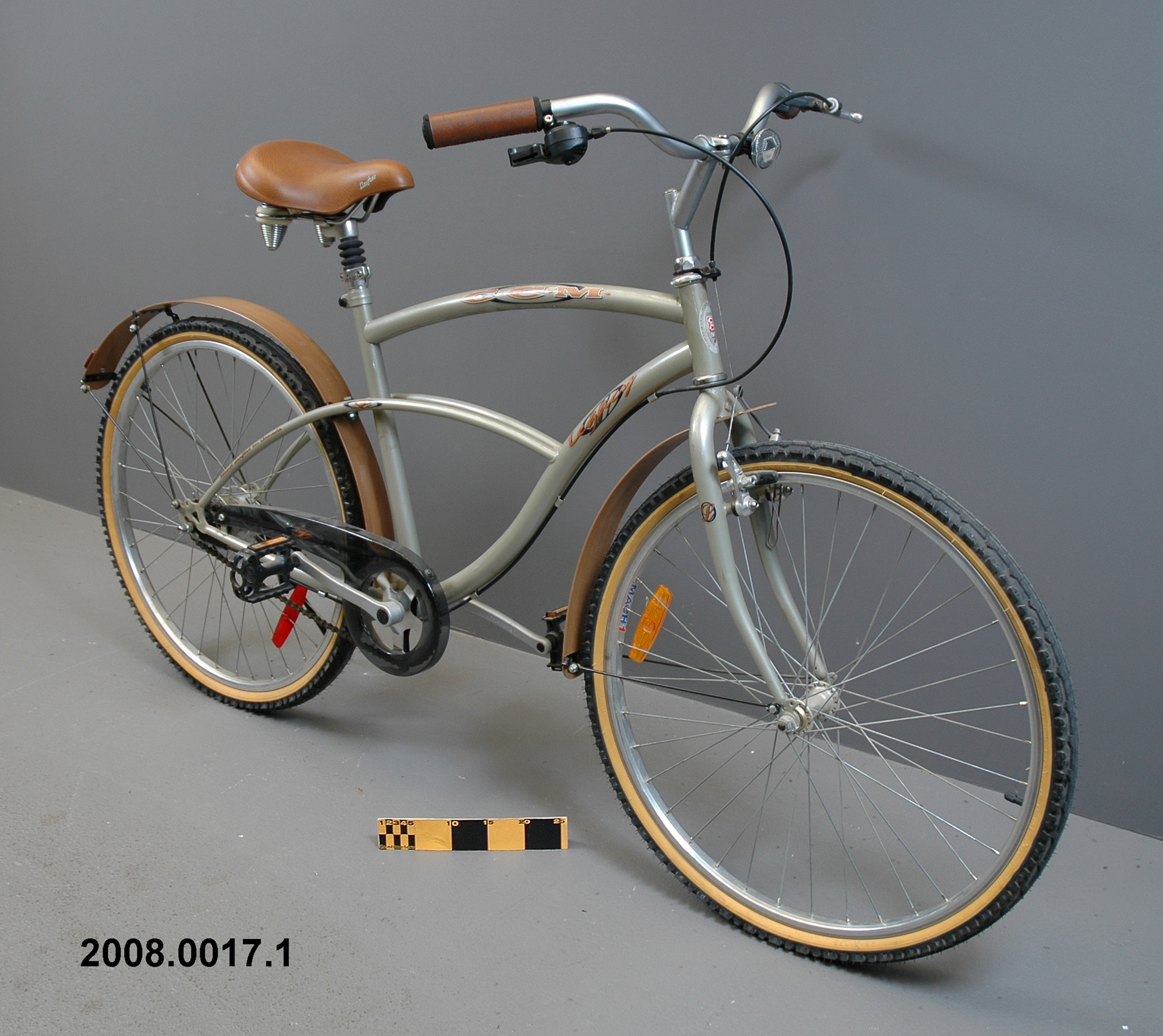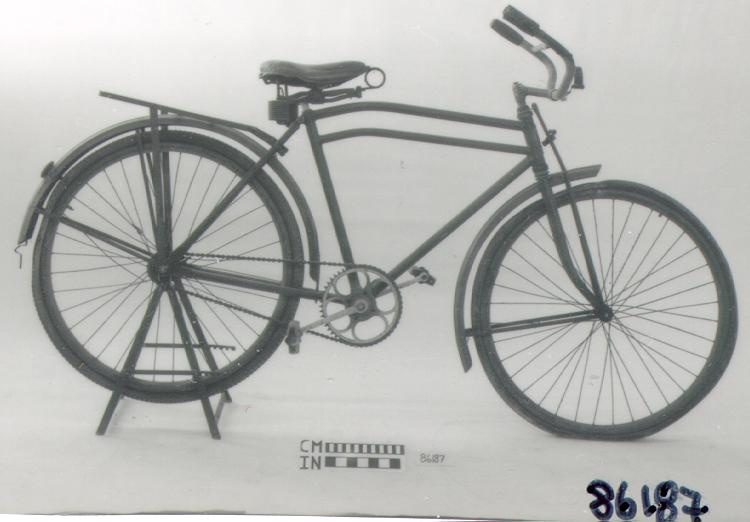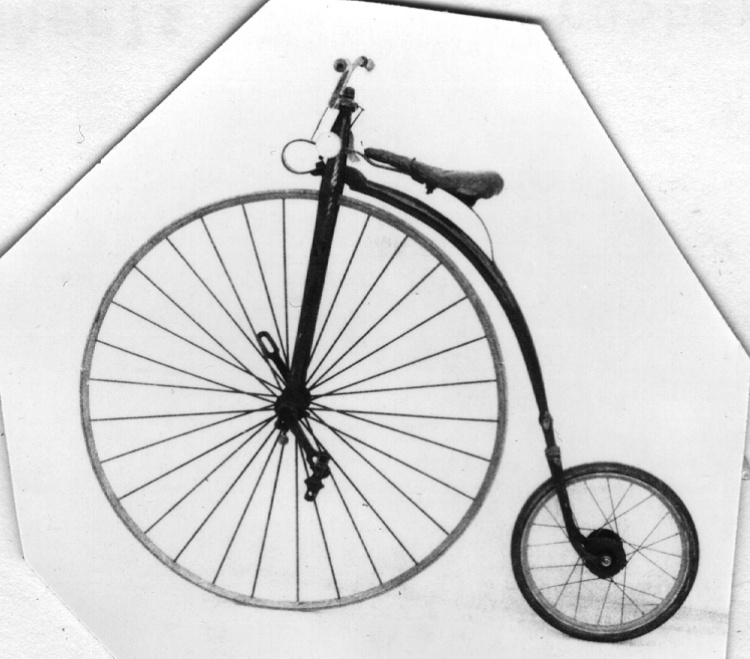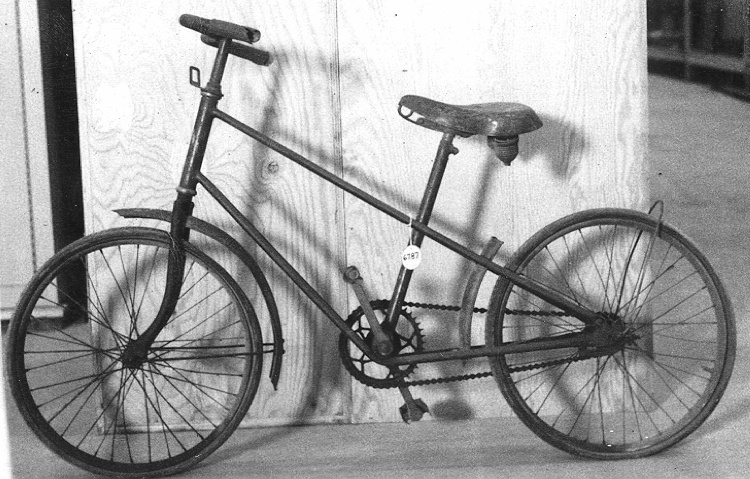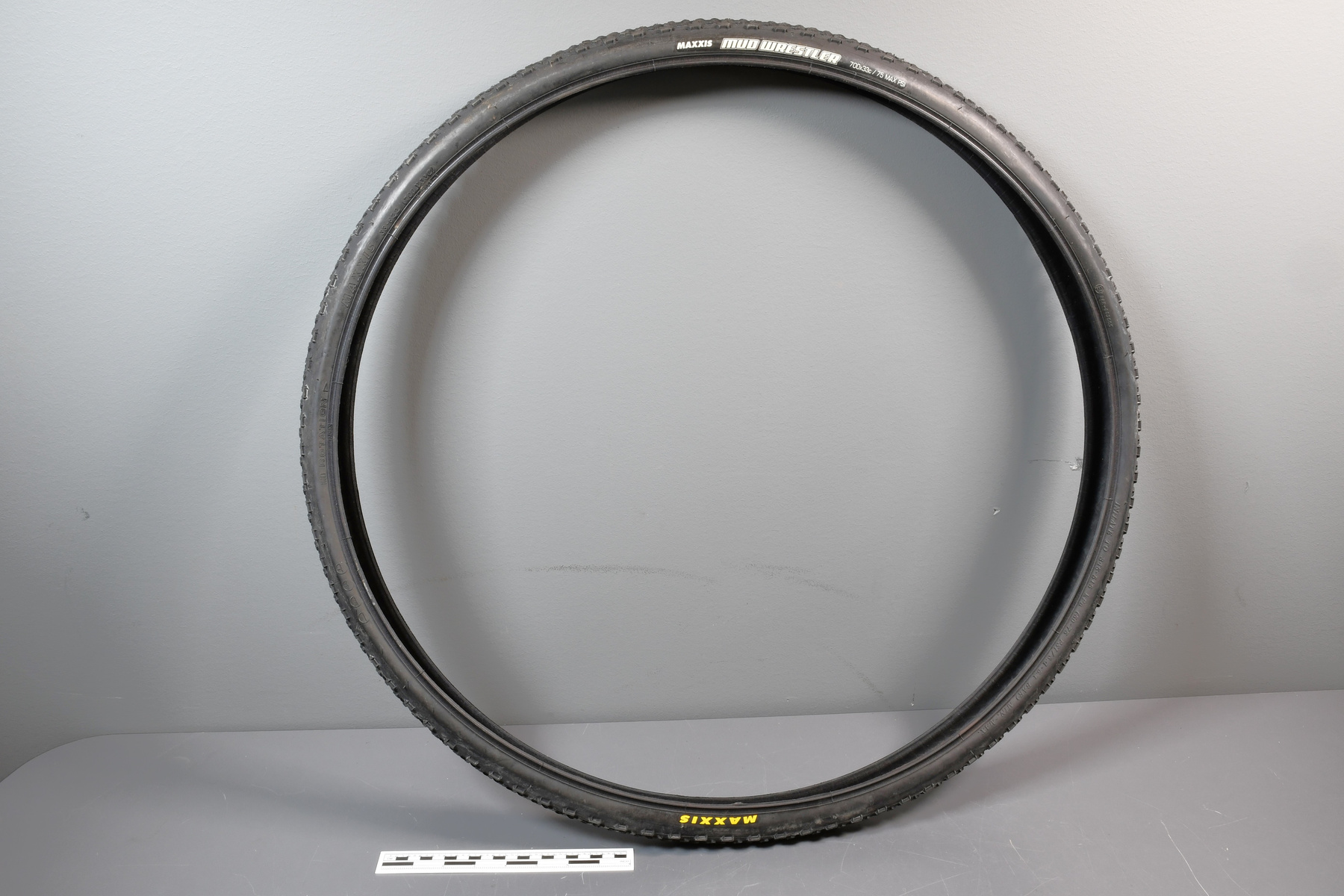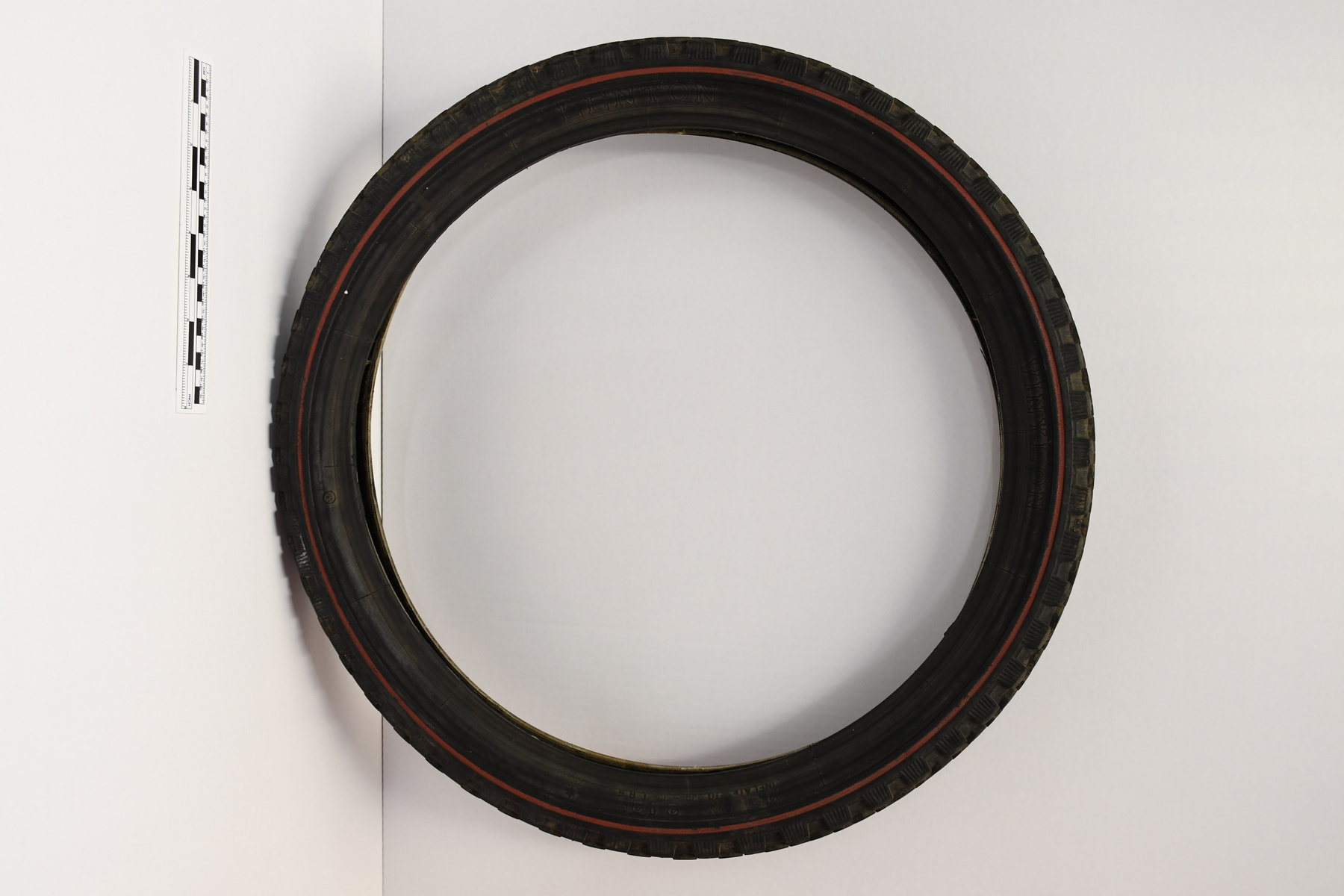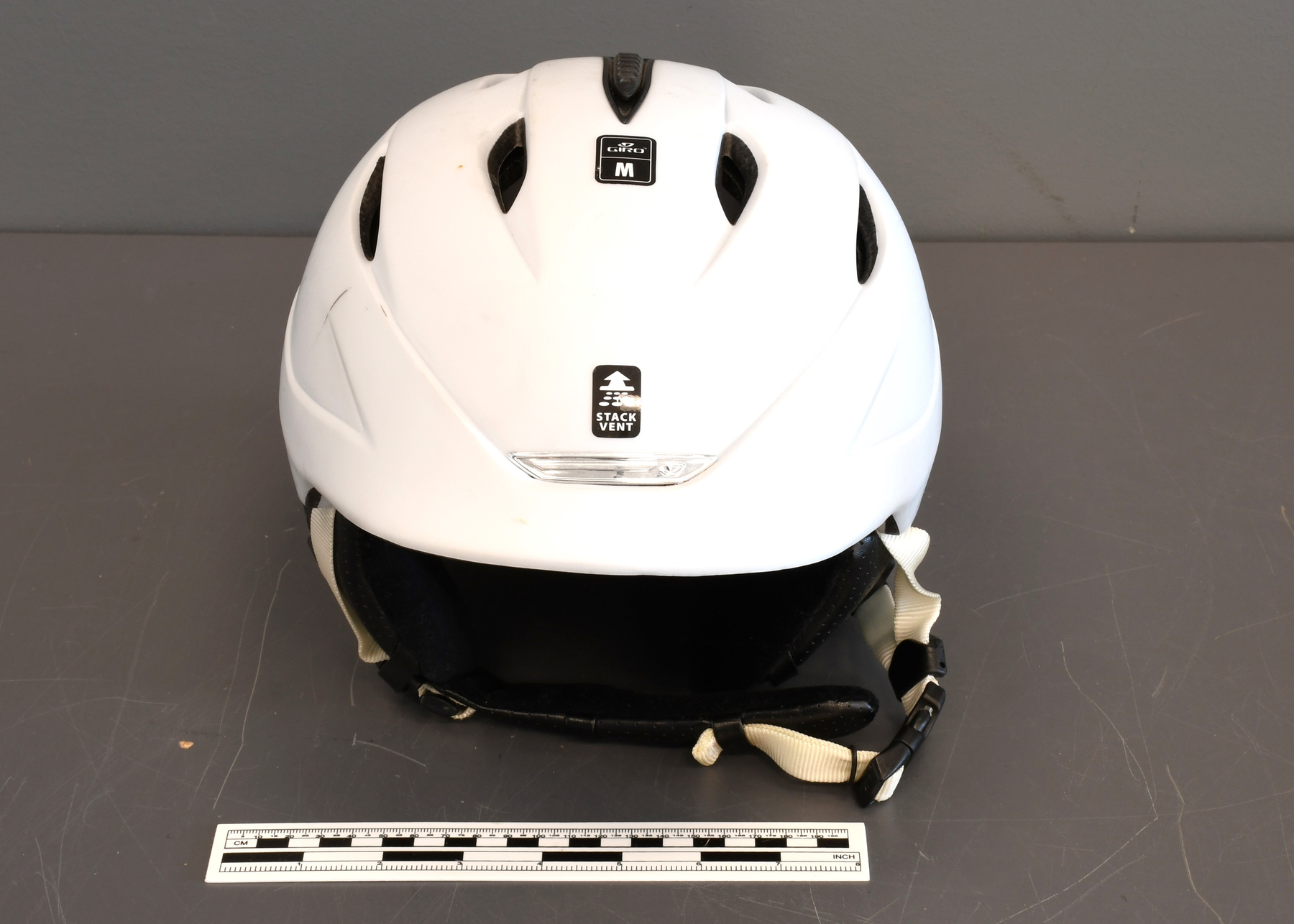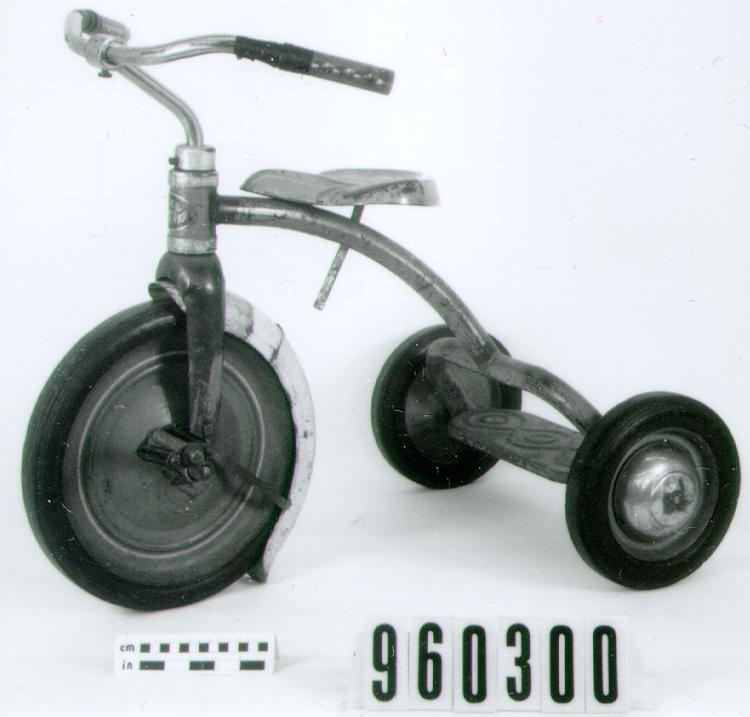Bicycle
Use this image
Can I reuse this image without permission? Yes
Object images on the Ingenium Collection’s portal have the following Creative Commons license:
Copyright Ingenium / CC BY-NC-ND (Attribution-NonCommercial 4.0 International (CC BY-NC 4.0)
ATTRIBUTE THIS IMAGE
Ingenium,
2018.0245.001
Permalink:
Ingenium is releasing this image under the Creative Commons licensing framework, and encourages downloading and reuse for non-commercial purposes. Please acknowledge Ingenium and cite the artifact number.
DOWNLOAD IMAGEPURCHASE THIS IMAGE
This image is free for non-commercial use.
For commercial use, please consult our Reproduction Fees and contact us to purchase the image.
- OBJECT TYPE
- safety/chain drive/triangulated frame/mens
- DATE
- 1936–1942
- ARTIFACT NUMBER
- 2018.0245.001
- MANUFACTURER
- CCM
- MODEL
- Road Racer
- LOCATION
- Canada
More Information
General Information
- Serial #
- N/A
- Part Number
- 1
- Total Parts
- 1
- AKA
- N/A
- Patents
- N/A
- General Description
- Canada Cycle and Motor Company's " Road Racer " model most likely manufactured in the late 1930s. Le modèle " Road Racer " de la compagnie "Canada Cycle and Motor" fabriqué probablement vers la fin des années 1930s.
Dimensions
Note: These reflect the general size for storage and are not necessarily representative of the object's true dimensions.
- Length
- 183.0 cm
- Width
- 30.5 cm
- Height
- 94.6 cm
- Thickness
- N/A
- Weight
- N/A
- Diameter
- N/A
- Volume
- N/A
Lexicon
- Group
- Non-motorized Ground Transportation
- Category
- Cycles & cycling
- Sub-Category
- N/A
Manufacturer
- AKA
- CCM
- Country
- Canada
- State/Province
- Unknown
- City
- Unknown
Context
- Country
- Canada
- State/Province
- Unknown
- Period
- Used after its manufacture date which is likely circa 1937. Utilisé après sa date de production qui est approximativement 1937.
- Canada
-
This bicycle is a CCM Road Racer Model, probably from the late 1930s. It embodies important themes in the history of cycling and cycle manufacturing in Canada. Introduced in the midst of the Great Depression and offerd until the middle of the Second World War, it represents the resurgence of bicycle transportation as an affordable means of transportation in periods of economic hardship and rationing. This might explain why the company advertised it not just as a sporting vehicle but also as a good working bike for messengers and anyone else who needed a lightweight, speedy vehicle. The company was instrumental in promoting and sponsoring bicycle racing and racers. In this context, the Road Racer can be seen as a way not only to sell more bicycles but also to encourage young athletes to take up the sport. While the specialized racing models were relatively expensive and tailored for use by experienced amateur and professional racers, the Road Racer was no more expensive than a standard CCM bike and more versatile and adaptable than the previous "Flyer" models. The company promoted it as a multi-purpose vehicle suitable for, among other things, " Boy and Girl athletes in many lines of sport " who needed a good training bicycle. :;:Cette bicyclette est un modèle Road Racer CCM venant de la fin des années 1930s. Ce modèle incarne certain thèmes importants de l'histoire du cyclisme et la production de bicyclette au Canada. Introduit lors de la Grande Dépression et offert jusqu'au milieu de la Seconde Guerre mondiale, ce modèle représente la résurgence du transport de bicyclette en tant que moyen de transport abordable dans une période économique très difficile. Ceci pourrait expliquer pourquoi la compagnie faisait la promotion non seulement en tant que véhicule sportif mais aussi en tant qu'une bicyclette utile pour des messagers ou n'importe qui qui avait besoin d'un véhicule léger et rapide. La compagnie a joué un grand rôle dans la promotion des bicyclettes de courses. Dans ce contexte, le Road Racer est vu comme une façon de vendre plus de bicycles mais aussi d'encourager des jeunes athlètes d'entreprendre ce sport. Alors que les modèles de course spécialisés étaient relativement dispendieux and adaptés pour des conducteurs professionnels avec de l'expérience, le Road Racer coûtait aussi cher qu'une bicyclette standard de CCM et était plus polyvalent et adaptable que les modèles précédents "Flyer". La compagnie a fait la promotion de ce modèle en tant que véhicule a plusieurs utilités appropriées pour des " athlètes, garçons et filles, dans plusieurs différents sports " qui avaient besoin d'une bicyclette pour de l'exercice. - Function
-
To provide a means of human-powered transportation. This particular model intended for use by non-professional racers, young athletes in training, messenger service riders and others who wanted or needed to ride at speed. - Technical
-
CCM was not a highly innovative company but it did take serious interest in building racing bicycles. Ten years of experience with the “Flyer” had given CCM the knowledge and skills they needed to build an ‘entry-level’ racing bike. They made the frame of seamless steel tubing rather than the more expensive chromel tubing used on the “Flyer” but better than the standard tubing used on heavier models. The “Road Racer” did not have cotterless cranks like the “Flyer” but it had a freewheel rear hub and calliper handbrake. It also had racing pedals, handlebars, tires, and rims. The bicycle we have been offered has upgraded parts including the hubs and the brake and possibly the handlebars. - Area Notes
-
Unknown
Details
- Markings
- On the head tube of the frame: " CCM " On the rear derailleur: PHILLIPS /. TO UNSCREW /. CELTONIA /. 710 "
- Missing
- Appears complete.
- Finish
- Bicycle has a triangle style dark blue painted metal frame from steel tubing. The bicycle has two silver (aluminum?) curved handlebars with a maroon and brick-colored rubber grips. Bicycle seat has a dark brown leather surface stabilized with some silver metal screws. The back of the seat has a small brown leather pouch with silver metal clasps. Bicycle has a standard silver metal chain attached to a metal rear derailleur. The foot pedals are also a silver metal material with brown leather straps fixed onto the surface used to secure feet. Both the front and back wheels have a white painted metal fender above the tire. Each wheel has light grey metal spokes. The two rubber tires have a maroon brick-colour that match the colour of the handlebar grips. The front wheel of the bike is being held by a black synthetic strap onto one of the dark blue tubes of the frame. Bicyclette a un cadre en style triangulaire en métal peinturé bleu foncé fabriqué de tubes d'acier. La bicyclette a un guidon argenté en aluminium avec deux poignées en caoutchouc en couleur bordeaux. Le siège de bicyclette a une surface en cuir brun foncé qui est sécurisé à partir de vis en métal argentés. La bicyclette a une chaîne en métal argentée standard qui est attachée au dérailleur arrière en métal. Les pédales sont aussi en métal argenté avec des sangles en cuir bruns affixé sur la surface des pédales pour sécuriser les pieds. La roue avant et arrière ont un garde-boue en métal peinturé en métal au-dessus de la roue. Chaque roue a des rayons en métal de couleur gris pâle. Les deux pneus en caoutchouc sont en couleur bordeaux qui correspond aux deux poignées sur le guidon. La roue d'avant de la bicyclette est retenu en place par une sangle noire synthétique à l'un des tubes bleu foncé du cadre.
- Decoration
- N/A
CITE THIS OBJECT
If you choose to share our information about this collection object, please cite:
CCM, Bicycle, between 1936–1942, Artifact no. 2018.0245, Ingenium – Canada’s Museums of Science and Innovation, http://collections.ingeniumcanada.org/en/id/2018.0245.001/
FEEDBACK
Submit a question or comment about this artifact.
More Like This
